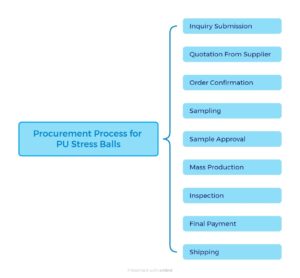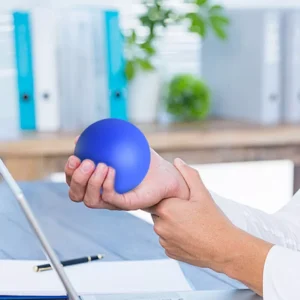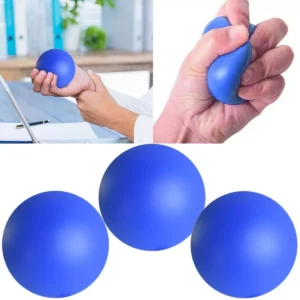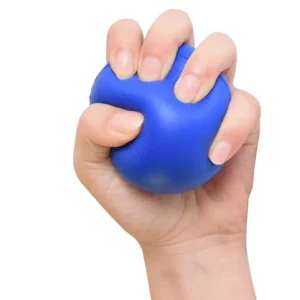Introduction
PU stress balls have become a must-have tool for hand therapy and recovery because they’re simple, versatile, and can be used for a variety of therapeutic purposes. These stress balls are made from high-quality polyurethane (PU) and provide resistance and tactile feedback to help people regain hand strength, flexibility, and coordination after things like strokes, injuries, or arthritis flare-ups. If you’re a healthcare provider, physical therapist, or rehab facility, investing in good PU stress balls can help your patients recover faster and give you a cheap, long-lasting tool for ongoing hand therapy and recovery.
1. Why Choose PU Stress Balls for Hand Therapy?
1.1 Meeting Core Needs of Hand Therapy
Hand and wrist therapy is often about rebuilding muscle strength, joint flexibility, and overall hand coordination. For patients recovering from strokes, injuries, or degenerative conditions like arthritis, it’s critical to exercise the hand muscles in a controlled and regular way. PU stress balls are perfect for this because they offer the right amount of resistance without being too hard or uncomfortable.
They allow you to do exercises like squeezing, gripping, and wrist flexion. These exercises are crucial for rebuilding fine motor skills and hand function, which are a big part of someone’s quality of life and ability to be independent in their daily activities.
1.2 Advantages of PU Material
Polyurethane, or PU, is a lightweight, flexible, and super-durable material. It’s more versatile than other materials like silicone or rubber because you can make it harder or softer and more or less elastic. This makes it perfect for different stages of hand therapy. PU is also nontoxic, hypoallergenic, and meets high environmental and safety standards. This means you can use it over and over again in a clinical or home setting without worrying about it breaking down or causing any problems.
Key Benefits of PU Material in Stress Balls:
- Wide Range of Hardness Options: You can get PU stress balls in different hardness levels to match the specific needs of your patients.
- Durability: PU stress balls are known for their long-lasting elasticity. They’ll keep their shape and resistance even if you use them every day.
- Safety and Compliance: High-quality PU stress balls are often manufactured to meet international safety standards (such as EN71 and ASTM F963), ensuring they are safe for all users, including children and elderly patients.
1.3 Portability and Durability
For patients who need to do exercises regularly, PU stress balls are great because they’re portable and they last a long time. You can use them at home, in a clinic, or on the go. They’re small enough to fit in your pocket or purse, so you can take them anywhere. They’re also durable, so you can buy them in bulk and not worry about them breaking. This saves you money in the long run.
Tip for Buyers: Choose a range of PU stress balls with different resistance levels. You’ll need different balls for different phases of hand therapy, from the beginning through advanced strengthening.

2. Specific Applications of PU Stress Balls in Hand Therapy & Recovery
The adaptability of PU stress balls allows for varied applications in hand therapy. Below is a table that highlights the primary therapy and recovery scenarios where PU stress balls provide significant benefits.
| Therapy Scenario | Patient Type | Usage Method | Therapy Outcome |
|---|---|---|---|
| Post-Stroke Recovery | Stroke patients | Perform repetitive squeezing and releasing exercises, gradually increasing intensity and frequency. | Improves hand strength, coordination, and muscle control. |
| Injury Recovery | Patients with hand injuries | Use different hardness levels to gradually strengthen grip and hand muscles. | Restores flexibility and strength, prevents muscle atrophy. |
| Arthritis Management | Arthritis patients | Use softer stress balls for gentle pressing to avoid overstraining. | Reduces stiffness and pain, enhances joint flexibility. |
| Post-Surgical Recovery | Patients recovering from hand surgery | Start with gentle pressing exercises, progressively moving to more resistance-based activities. | Restores hand mobility and rebuilds muscle structure. |
Tip for Buyers: Consider offering multi-pack options with varying hardness levels to accommodate different stages of hand therapy and recovery. This can provide hospitals and rehab centers with a comprehensive, one-stop solution for various therapy needs.

3. Real-world cases of PU Stress Balls in Therapy & Recovery
Case Study 1: Stroke Recovery Program in a Rehabilitation Center
In a stroke rehab center, therapists used PU stress balls in the daily hand exercise routines of patients who were recovering from motor problems. They started with soft balls and gradually moved to harder ones as the patients got stronger. After six weeks, the patients who did the stress ball exercises had a 25% improvement in hand flexibility and grip strength compared to those who only did passive therapy.
Outcome: Using PU stress balls provided a low-cost, effective method for enhancing recovery speed and strength while reducing the overall therapy time required.
Case Study 2: Arthritis Relief in a Senior Care Facility
At a senior care center, PU stress balls were introduced as part of a gentle exercise routine for residents with arthritis. Caregivers noticed that the patients who regularly used the soft PU stress balls reported reduced hand stiffness and pain. Over three months, 70% of the participants reported significant improvements in joint flexibility, and several patients were able to reduce their reliance on pain medication.
Outcome: PU stress balls provide a natural, drug-free method for managing arthritis symptoms, allowing patients to experience relief with a simple, easy-to-use tool.
Case Study 3: PU Stress Balls in Senior Rehabilitation Programs
In a senior care center specializing in rehabbing older people, they used PU stress balls in the daily hand exercises of residents who had arthritis and limited hand mobility. Over six months, the people who used the stress balls had a 15% increase in grip strength and a 20% reduction in joint stiffness compared to the people who didn’t use the stress balls. The caregivers also said the people who used the stress balls were happier and more engaged in their daily activities.
Outcome: The integration of PU stress balls into the senior care program not only helped patients regain hand strength but also contributed to overall well-being by allowing them to engage more fully in their routine activities.
Tip for Buyers: These examples show you how PU stress balls work in real life with different types of patients. They’re cheap, and they work well.
4. Key Considerations When Purchasing PU Stress Balls for Therapy & Recovery
4.1 Range of Hardness Options
Hand therapy and recovery require different levels of resistance depending on the patient’s condition and stage of recovery. For instance, patients who are early in their therapy journey, such as post-surgery or post-stroke, typically require softer stress balls that are easier to compress. More advanced patients may need firmer options to build strength.
Recommended Hardness Levels:
- Soft PU Stress Balls: Ideal for initial recovery, post-surgery, or patients with limited hand strength.
- Medium PU Stress Balls: Suitable for intermediate stages of recovery and arthritis management.
- Hard PU Stress Balls: Best for advanced recovery, focusing on strength building and muscle endurance.
4.2 Safety and Environmental Compliance
In the medical field, product safety is paramount. Buyers should look for PU stress balls that meet international safety certifications, such as EN71 and AMTM F963 approval if necessary. This is especially important for healthcare environments, where product safety is critical for patient use.
Tip for Buyers: Request certification documents from suppliers to confirm the product’s compliance with healthcare industry standards.
4.3 Durability and Longevity
High-quality PU stress balls maintain their shape, elasticity, and resistance level even with daily use, making them cost-effective for long-term therapy programs. Investing in durable products helps reduce the frequency of replacements, thereby minimizing maintenance costs and saving budget because you don’t have to replace them as often.
Tip for Buyers: Opt for PU stress balls with verified durability ratings, ensuring they are built to withstand heavy usage without deforming.

5. Market Trends and Data Supporting PU Stress Ball Usage in Therapy
5.1 Growth in the Global Rehabilitation Equipment Market
According to a report by MarketsandMarkets, the global rehabilitation equipment market is projected to reach $50 billion by 2026, with a CAGR of 6.8%. The aging population and increasing prevalence of chronic conditions are driving demand for hand therapy devices. PU stress balls, being affordable, easy to use, and versatile, are among the most popular tools in this category, especially in regions with growing elderly populations.
5.2 Popularity and Effectiveness of PU Stress Balls
Survey data indicates that over 60% of rehabilitation centers and long-term care facilities have incorporated PU stress balls into their treatment protocols for hand therapy. Healthcare providers report high patient satisfaction and visible improvements in mobility, further solidifying PU stress balls’ role in therapy.
Tip for Buyers: Leveraging market data and usage trends can support procurement decisions by highlighting PU stress balls’ increasing popularity and effectiveness in hand therapy.
6. FAQs
Q1: How should PU stress balls be cleaned and disinfected in a medical setting?
A1: PU stress balls can be wiped with a damp cloth and mild disinfectant. For more intensive cleaning, use an alcohol-based sanitizing solution. Always follow the manufacturer’s guidelines.
Q2: What is the difference between PU stress balls and silicone or rubber stress balls?
A2: PU stress balls are generally softer and more versatile in hardness levels, making them suitable for various stages of hand therapy. They are also more affordable and hypoallergenic compared to rubber, which may cause allergic reactions in sensitive individuals.
Q3: Can PU stress balls be used long-term without losing effectiveness?
A3: Yes, high-quality PU stress balls are designed for durability and repeated use, maintaining their elasticity and shape even with daily handling.
Q4: Are PU stress balls suitable for patients with sensitive skin or allergies?
A4: PU stress balls are hypoallergenic and made from non-toxic materials, making them safe for patients with sensitive skin.
Tip for Buyers: Addressing common questions can help reassure procurement officers about the product’s safety, durability, and suitability for medical use.

7. Conclusion: Enhancing Therapy & Recovery with PU Stress Balls
PU stress balls are a versatile, cost-effective, and proven tool for hand therapy. Their flexibility in terms of hardness, durability, and safety standards make them an excellent investment for hospitals, rehabilitation centers, and nursing homes. Healthcare providers can improve patient outcomes, reduce recovery times, and optimize resource allocation by incorporating high-quality PU stress balls into their therapy programs.
Value Proposition for Buyers:
- High ROI: PU stress balls provide long-term durability and effectiveness at a low cost.
- Improved Patient Satisfaction: Patients benefit from an accessible, easy-to-use tool that accelerates their recovery process.
- Diverse Applications: From stroke recovery to arthritis management, PU stress balls meet a wide range of therapy needs.
Recommended Product Specifications for PU Stress Balls
| Hardness Level | Recommended Patient Type | Specifications | Applications |
|---|---|---|---|
| Soft | Stroke patients, post-surgical recovery | 6cm – 8cm | Initial therapy, light squeezing |
| Medium | Arthritis patients, intermediate recovery | 7cm – 9cm | Flexibility improvement, moderate resistance |
| Hard | Advanced recovery, strength building | 8cm – 10cm | Grip strengthening, muscle building |
Tip for Buyers: Consider purchasing multi-packs with all three hardness levels to accommodate various patient needs and therapy stages.
Ask for a quote? Send me now! dinachen@istressball.com

